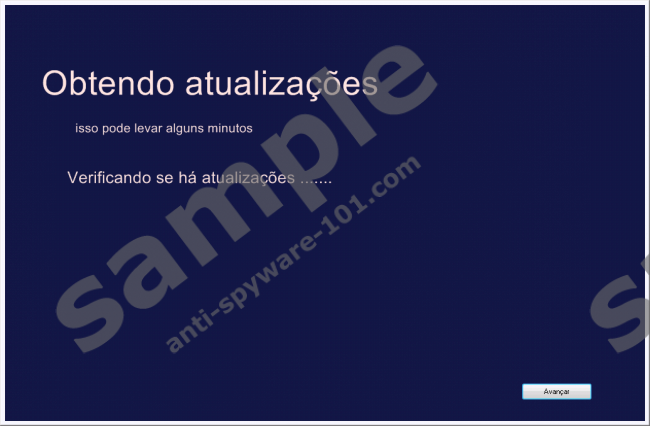What is Onion3Cry Ransomware?
If a window entitled “onion3 crypt” has popped up on your screen, there is no doubt that a malicious infection called Onion3Cry Ransomware has slithered in. If this malicious infection successfully invades an operating system, it quickly encrypts files that represent photos, documents, and other text and media files. Just like most ransomware threats, this one encrypts files that are considered personal. If these files are backed up externally or online, you do not need to stress about the files that were corrupted on your PC. But if backups do not exist, the malicious ransomware might push you into communicating with cyber criminals and paying a huge ransom for a tool that probably does not even exist. Needless to say, Anti-Spyware-101.com research team does not recommend wasting your money. Does that mean that the files corrupted on your PC are lost for good? While there is a small chance that a free decryptor will become available in the future, it is most likely that your files are lost. In either case, you must delete Onion3Cry Ransomware, and that is what we focus on in this report.

How does Onion3Cry Ransomware work?
Onion3Cry Ransomware comes from the same family of malware as FlatChestWare Ransomware, Oxar Ransomware, and many other threats alike. These infections might have been created by different parties, but they were created using the same source code. In most cases, infections from this Hidden-Tear family are spread using corrupted spam emails. It was found that the file executing Onion3Cry Ransomware might be introduced to you as an update file, but, of course, updates from unknown third parties do not exist. Therefore, if you face an update file sent to you via email, you need to ignore it. If the file is camouflaged, and the update is introduced to you once you open it, you need to ignore it as well. Of course, if the update is started, the encryption might be started simultaneously. In this case, your best bet would be to turn the computer off. Unfortunately, most victims realize that a malicious threat has invaded and that files were corrupted only after the ransom note appears. Surprisingly, this note is represented via an executable (instead of, for example, TXT or HTML files), which is called “### DECRYPT MY FILES ###.exe”. This file is added to the Startup, and you need to remove it if you do not want new files to be encrypted on every startup.
If you go to %ALLUSERSPROFILE%\Start Menu\Programs\Startup\, you will find a file representing the startup POE (point of execution) of “### DECRYPT MY FILES ###.exe” with the “.lnk” extension attached to it. Along with it, you should find the shortcut file of “goupdate.exe”, which is the file responsible for encrypting your files. If it does its job as expected, your personal files will have the “.onion3cry-open-DECRYPTMYFILES” extension attached to them. If you realize that highly sensitive files were encrypted, and that backups do not exist, you are more likely to pay attention to the ransom demands, which include contacting onion33544@india.com, and then, most likely, paying money for a bogus tool. Even if the developer of Onion3Cry Ransomware has the decryption key, they are unlikely to provide you with it. Needless to say, you should not waste money on something that you are unlikely to receive.
How to delete Onion3Cry Ransomware
Where is the launcher of Onion3Cry Ransomware? If you cannot find it, you might be able to locate it via the malicious process; that is if you can identify it. Other than that, you need to delete two files and their shortcuts, and that is not that difficult to do. All in all, only more experienced Windows users should remove Onion3Cry Ransomware manually. Others should install anti-malware software. We recommend this to experienced users as well. While, in this case, the best part about this software is that it can automatically erase the ransomware, it is most useful because of the protection it can enable. If you do not use something that like, more threats could slither into your operating system. If you choose to employ anti-malware software, make sure you keep it updated; otherwise, it will not serve you beneficially.
Removal Instructions
- Tap Ctrl+Shift+Esc to launch Task Manager.
- Click the Processes tab and look for a malicious process with a random name.
- If you find a process you are sure belongs to malware, right-click it and click Open File Location.
- Kill the process by clicking End process and then Delete the malicious .exe file in the file location window.
- Tap Win+E to launch Windows Explorer.
- Enter %APPDATA%\Local\Gogle\update\ into the bar at the top.
- Delete the malicious file named goupdate.exe.
- Enter %ALLUSERSPROFILE%\Start Menu\Programs\Startup\ into the bar at the top.
- Delete the files named goupdate.exe.lnk and ### DECRYPT MY FILES ###.exe.lnk.
- Finally, move to the Desktop and Delete the file named ### DECRYPT MY FILES ###.exe.
- Run a full system scan using a legitimate malware scanner as soon as you Empty Recycle Bin.
100% FREE spyware scan and
tested removal of Onion3Cry Ransomware*
Stop these Onion3Cry Ransomware Processes:
### DECRYPT MY FILES ###.exe
goupdate.exe





0 Comments.